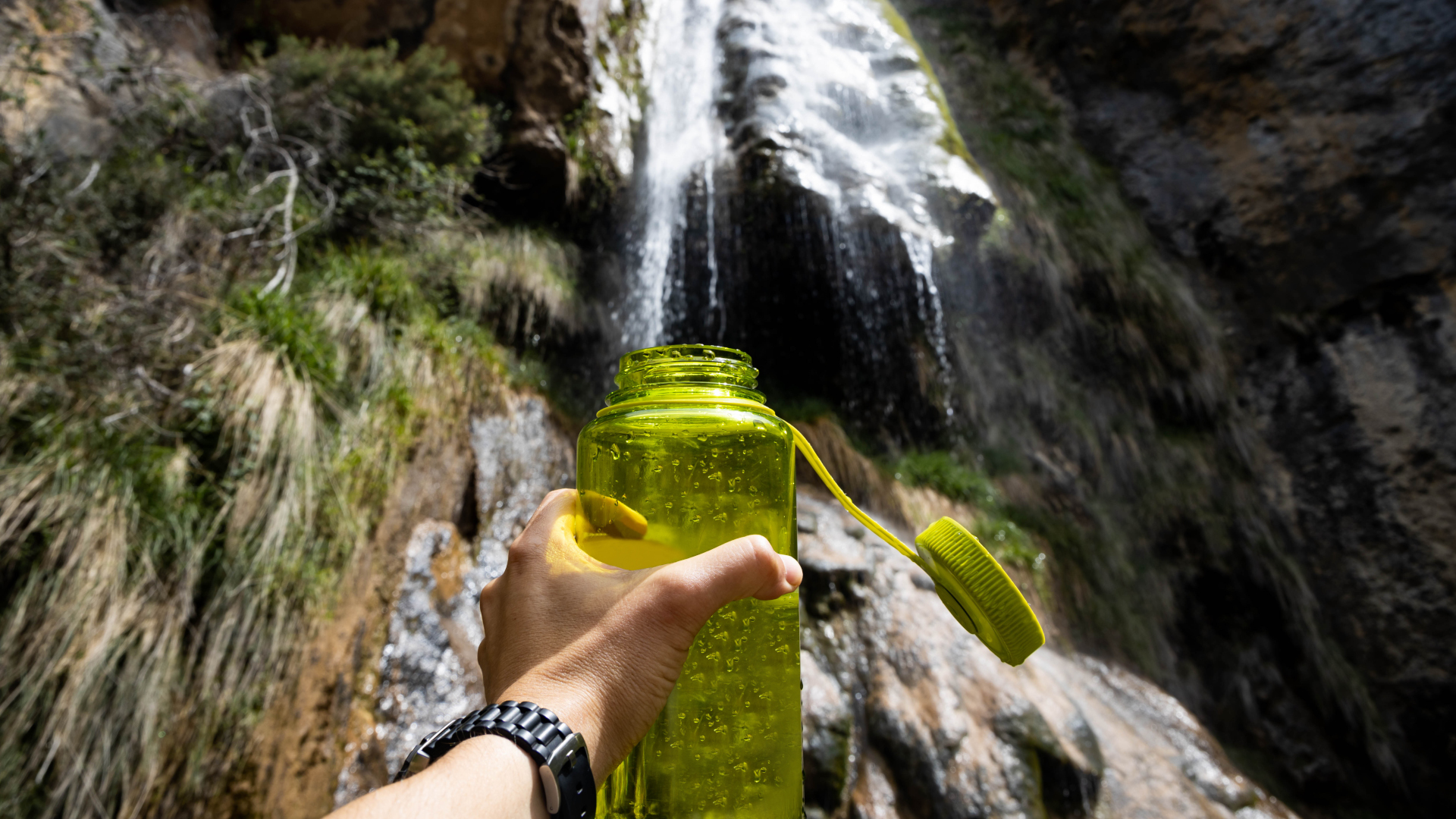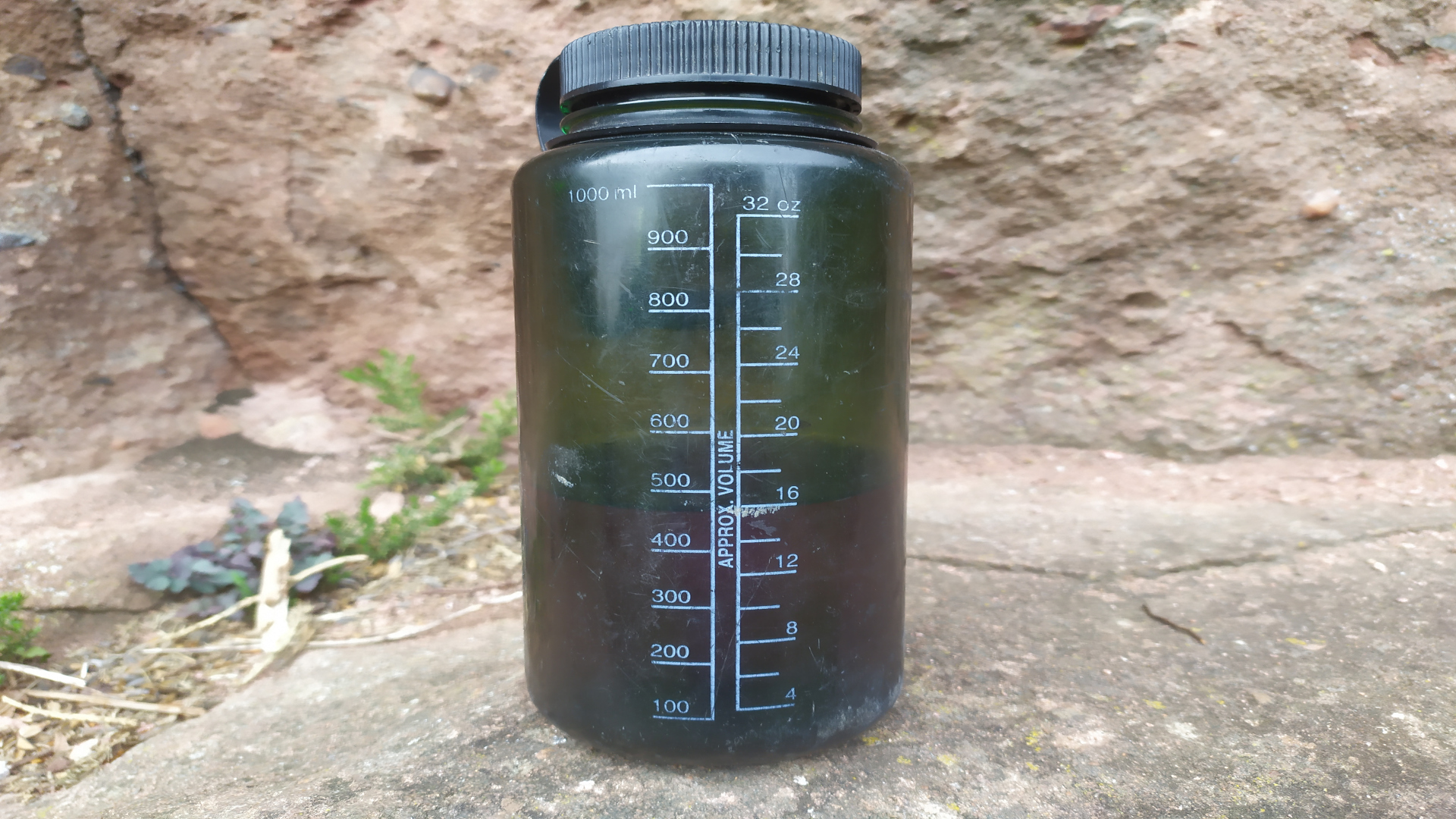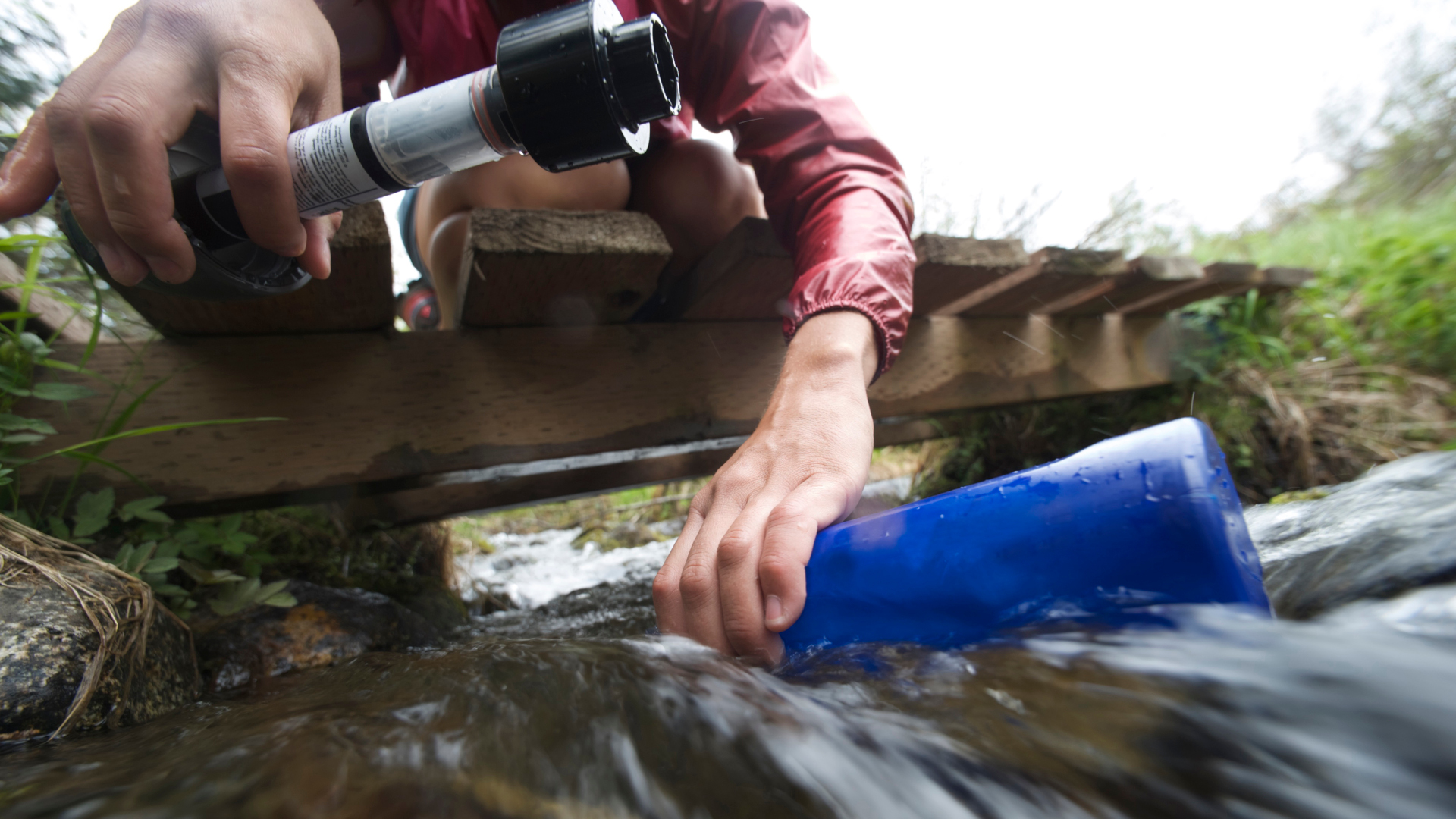Water for hiking: how much do you need to carry?
Learn why staying hydrated on the trail is so important and how much H2O you should be carrying on your hikes

Few things are quite so fundamental to the maintenance of a fit and fully functioning human body as adequate water intake. And never is getting our fill of H2O more important than when we’re exerting ourselves and spending hour upon hour exposed to the elements, as is the case when we’re hiking.
Given that many hiking trails cover terrain that’s short on reliable, non-seasonal water sources, though, and that even the best water bottles and best hiking flasks are only capable of carrying so much, how are we supposed to go about getting our fill of H2O while getting our wander on? And just how much water should we be carrying in order to avoid the (potentially grim) symptoms of dehydration?
In this article on water for hiking, we’ll answer the above questions and provide ten tips on how to stay hydrated on your hikes.
Water for hiking: why keeping an eye on your intake is important
If dehydration simply amounted to feeling a bit parched and suffering cravings for a can of something cool and bubbly long before the post-hike watering hole is within sight, it wouldn’t be so much of an issue. Sadly, the consequences of not getting our adequate fill of H2O can be more serious by far.
Water for hiking: signs and symptoms of dehydration
- Thirst
- Headaches, lightheadedness, fatigue
- Pungent and darker-colored urine
- Irritability
- Disorientation
- Poor coordination
- Stumbling and mumbling
While all of these symptoms would be not much more than a mild inconvenience at home, in backcountry terrain, a few of them – poor coordination and disorientation, most notably – could easily lead to land you in serious trouble.
Dehydration treatment: what to do if you’re showing symptoms
If you’re showing any of the above symptoms, the temptation is to hightail it to the nearest water source and guzzle down as much of the stuff as possible. This, however, might prove counterproductive. Instead, you should:
- Stop hiking
- Find shade, sit down, and rest
- Rehydrate with water and electrolytes, salt, or sports drinks
- Soak a shirt or hat in cool water to get your body temperature down
- Only start moving again when the symptoms have eased off

Water for hiking: how much water to bring on a hike
The age-old rule of thumb regarding the quantity of water needed to keep ourselves healthily hydrated on the trails is that we should carry one liter of water for every 2 hours of hiking. This estimation, however, is best taken with a hefty pinch of salt because several variables can influence how much water you’ll need on any given hike, most notably the weather, the level of physical exertion involved, and your metabolic rate.
All the latest inspiration, tips and guides to help you plan your next Advnture!
Weather. As you might expect, our bodies tend to perspire more when hiking in warm weather than in cold weather (by up to 20 percent or 300 ml per hour), though the difference between the two might not be as significant as we’re apt to think. For starters, the amount we sweat varies from person to person, not only depending on our metabolic rate but also on how well acclimatized we are to certain temperatures, as explained in this post by Science Direct. Also, when hiking in cool weather, we tend to wrap up in warm clothing that creates a microclimate that’s every bit as warm – if not warmer – and sweat-inducing as ambient temperatures when hiking in summer.
Given the above, the best policy is to carry the aforementioned minimum whatever weather you’re doing your hiking in – unless, of course, there are reliable water sources at regular intervals along your route – and up this by 150-200 ml per hour per 10 °F above what you personally consider a comfortable hiking temperature. If for example, you can hike in 60-degree weather without sweating excessively, in 80-degree weather you could carry around 1.4 liters of water per 2 hours of hiking instead of 1 liter.
Level of physical exertion. The type of trails you plan on hiking will also impact how much H2O you need to carry. The harder a trail makes your body work, the more sweat your body will generate; the more sweat it generates, the more you’ll need to drink to replace the lost fluids. This being so, it’s wise to research the type of terrain you’ll be hiking in before setting off and adjust the quantity of water you carry accordingly. For example, on a mellow, well-maintained trail with little elevation gain, sticking to the 0.5-liter-per-hour baseline will comfortably suffice. If, however, you plan on putting in a few thousand feet of ascent, or hiking in more rugged, off-trail terrain, then carrying an extra half liter per two hours of hiking is something you’re unlikely to regret.
All of the above, of course, also depends on your hiking MO – are you more of a stroller or speedy strider? If the latter, you’re more likely to work up a thirst and will need more H2O to replenish your system’s resources.
Personal hydration needs. No two hikers are alike, either as regards their general physiology and hiking style or their water intake requirements – we all have that one friend who seems to barely squeeze in a breath between chugs on their water bottle and another who can happily hike for hours on end without so much as a sip. The take-home from this observation is that determining the quantity of water you need on your hikes requires listening to your body, and that the above rule of thumb (one liter per two hours) should be regarded as a guideline only.

Water for hiking: tips to help you stay hydrated on the trail
- Hydrate pre-hike. As with all ailments, prevention of dehydration is far simpler than curing it. And like most hiking mishaps, avoidance begins at home. Before you head on a hike, try to drink around 12-16 ounces of water – this will up your baseline and ensure you have some hydration “banked” before the going gets tough.
- Identify wild water sources. Before setting off, set aside a few minutes to get out a map and locate wild water sources on your route. This will let you gauge just how much water you need to carry from the get-go, know how much to drink or stock up on at each source, and help you avoid schlepping more with you than you need. For info on how to treat water taken from wild sources, check out our guide to hydration packs vs. water purification.
- Pack electrolytes. Electrolytes are minerals responsible for directing water to the parts of our physiology that require it the most and, like water, are lost through sweat when we exercise. Carrying a few electrolyte gels or tablets, or even a sachet or two or salt that will help to speed up recovery from dehydration, therefore, is never a bad idea.
- Sip, don’t chug. To avoid exhausting your supply of water for hiking (and having to make pee stops every five minutes!), try to take sips every twenty minutes or so instead of necking your whole bottle in one go every few hours.
- Keep your H2O close to hand. If you aren’t using a hydration-compatible backpack (see our best hiking backpacks and best daypacks for models that are hydration compatible) or a hydration pack, it’s wise to ensure you stow your water bottle where it will be easily accessible while on the move – either in the hood or one of the mesh or zippered side pockets – so you won’t have to waste time when stopping to fish it out (which, of course, makes you less likely to do so).
- Stock up at water sources. When passing a water source – whether a river, creek, or man-made source – make sure you drink plenty, even if you don’t feel thirsty at the time. Doing so will let you avoid carrying more water than is necessary on the next stage of your hike.
- Hydrate well in all weathers. As mentioned above, dehydration can strike no matter what weather conditions you are hiking in, so drinking plenty of fluids is equally important on winter hikes as on summer hikes. When hiking in cold weather, carrying one of our best hiking flasks filled with hot tea is the ideal way to stay hydrated and give your body a heat boost at the same time.
- Dress appropriately. Wearing breathable, high-wicking clothing is one of the best ways of reducing how much you sweat and, in turn, how much water you need to drink in order to replenish lost fluids and stay hydrated. For more on breathable clothing, check out our guides to the best base layers, best hiking socks, and best hiking pants.
- Avoid the midday sun. Try to make the most of the early hours of the morning and late afternoon. (5 a.m. starts are no fun, granted, but neither is heat exhaustion, heatstroke, or dehydration). Starting early, or finding a shady spot to rest and sit out the midday heat, will let you put in the majority of your day’s mileage before (and after) the sun’s at its peak strength.
- Calculate your trip time. Knowing how many liters of water you need per hour of hiking isn’t terribly helpful if you don’t know how many hours you’ll be hiking for. As such, before setting off on a hike – particularly a long day hike or thru-hike – it’s wise to calculate your average hiking speed and use this to estimate how many hours you’re likely to be on the trail for.

Former Advnture editor Kieran is a climber, mountaineer, and author who divides his time between the Italian Alps, the US, and his native Scotland.
He has climbed a handful of 6000ers in the Himalayas, 4000ers in the Alps, 14ers in the US, and loves nothing more than a good long-distance wander in the wilderness. He climbs when he should be writing, writes when he should be sleeping, has fun always.
Kieran is the author of 'Climbing the Walls', an exploration of the mental health benefits of climbing, mountaineering, and the great outdoors.

